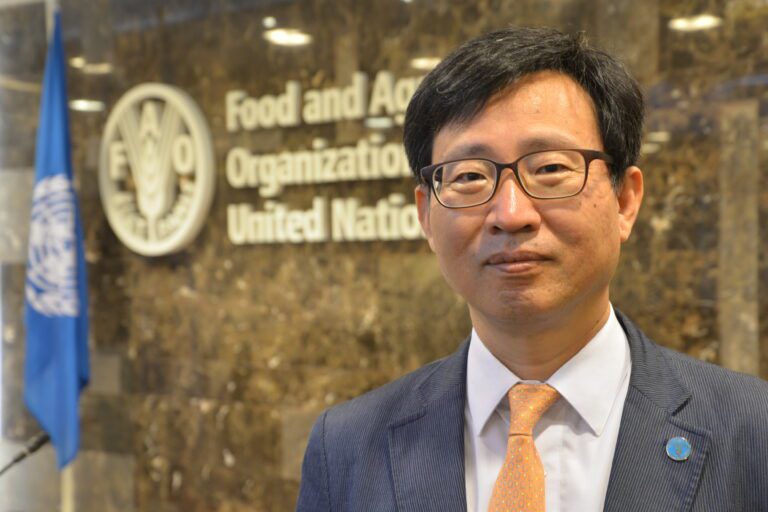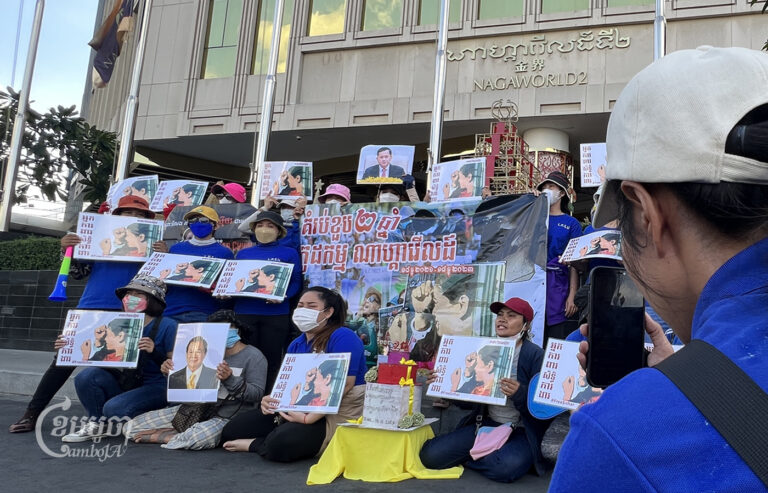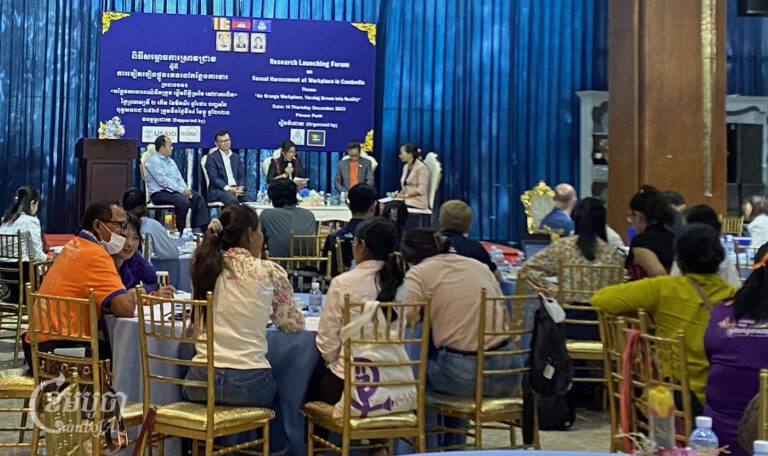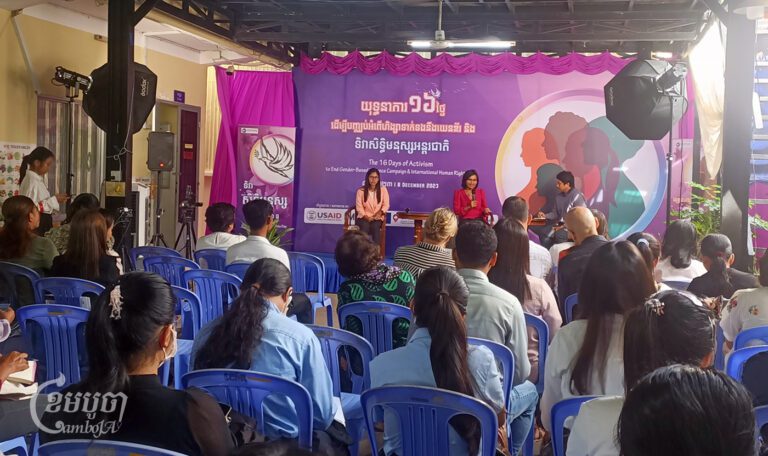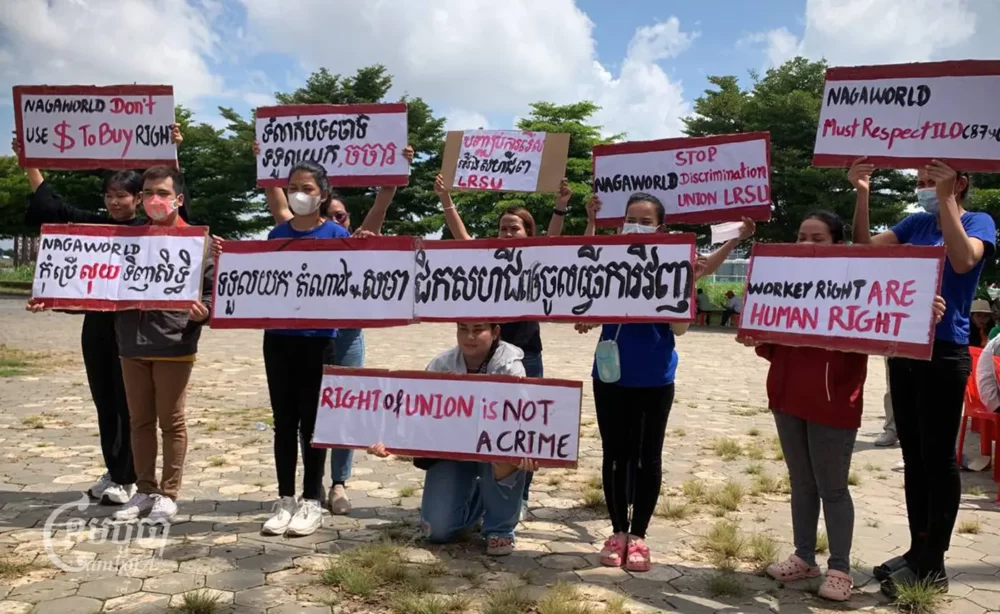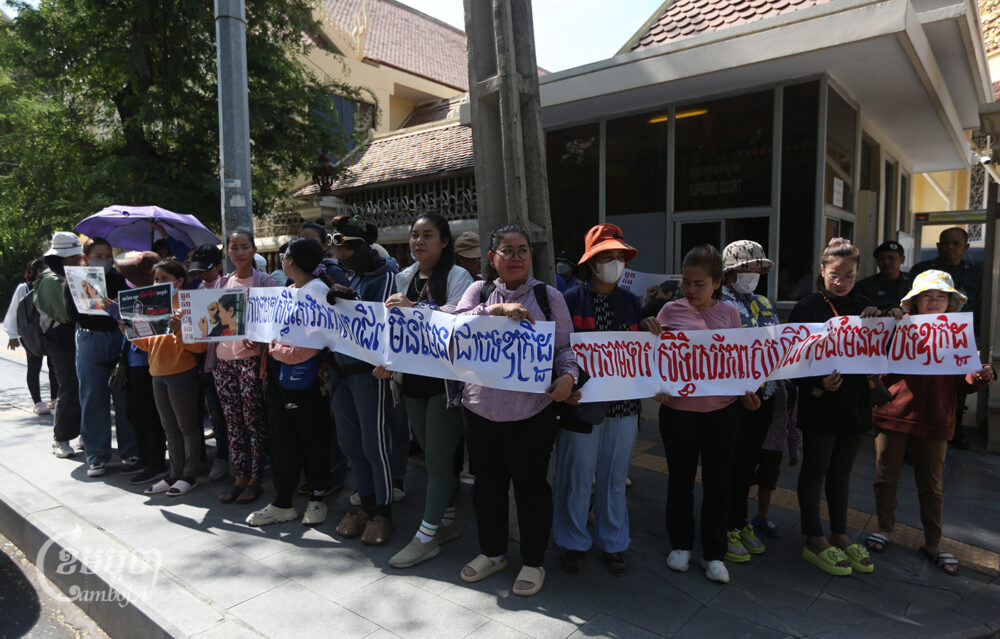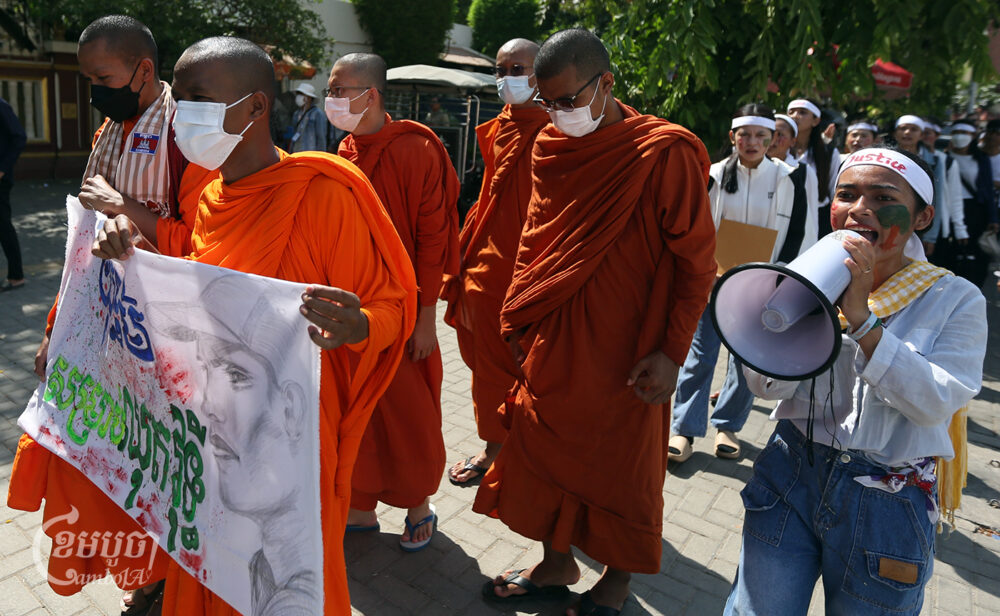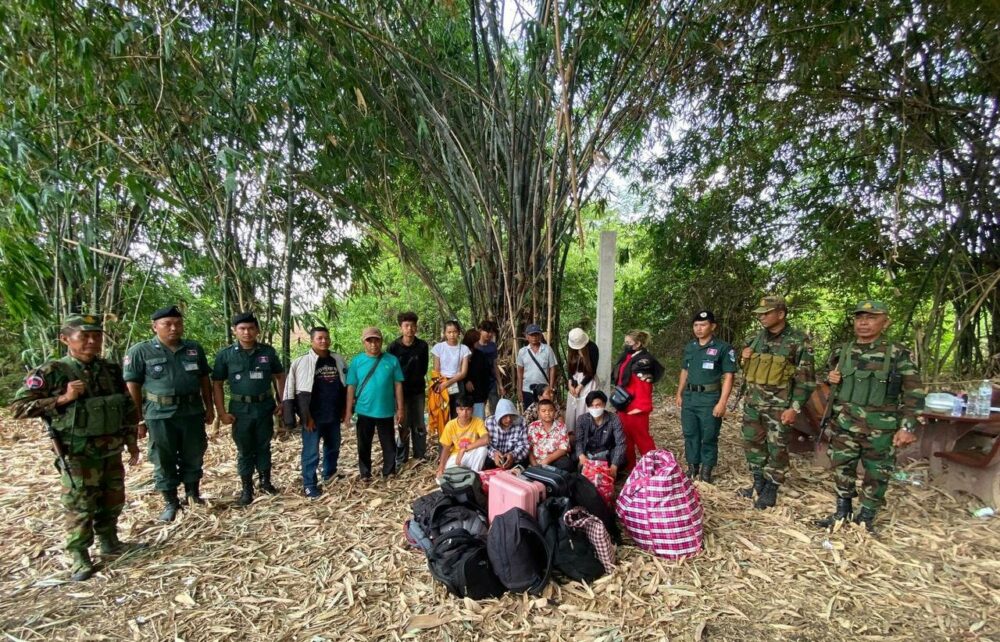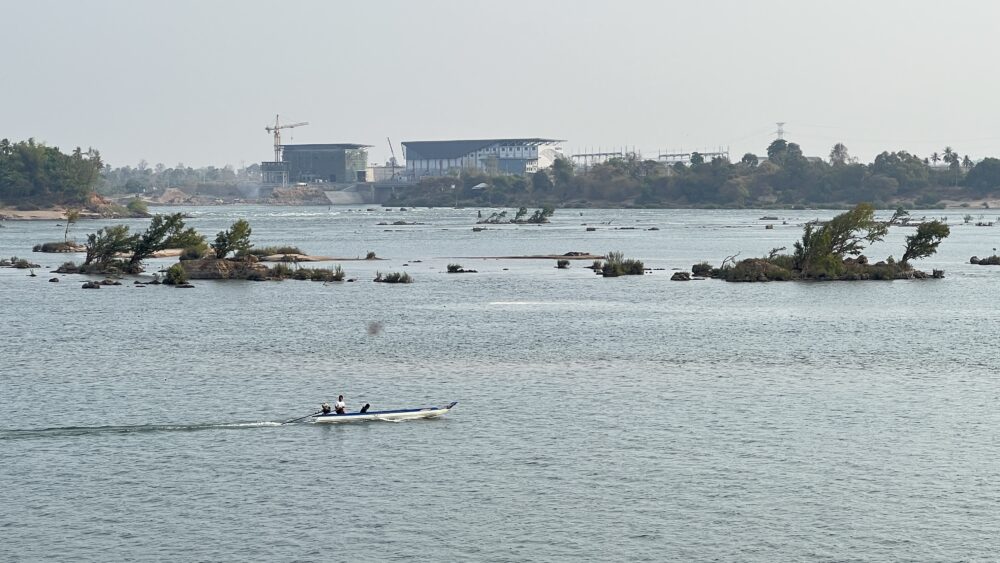Investing in women “accelerates progress”, is the theme of International Women’s Day (IWD) in 2024. However, NGOs say despite efforts to promote women’s rights and empower them, Cambodian women still face significant barriers to full participation in some sectors.
Cambodian Center for Human Rights (CCHR) declared that IWD 2024 marks a call for action to invest in women, celebrate their achievements and make them aware of their rights.
Unfortunately, Cambodia struggles with a patriarchal society that perpetuates deeply ingrained gender stereotypes and social norms, hindering progress in women’s rights.
“Instances of degrading behavior, such as verbal insults and inappropriate gestures, persist, creating a hostile environment for women and infringing on their rights and dignity,” CCHR press release.
Houn Phorn, CCHR’s project coordinator, said there is still limited participation of women in civic space, the promotion of human rights, as well as in the field of journalism compared to men, hence the CCHR’s IWD theme “Invest in Women, Accelerate Progress”.
“For CCHR, we want to push for more women to join the civic space and any other sector that promotes human rights. This is important,” he remarked.
Phorn said incomplete and unequal participation can be caused by social stereotyping, such as in the field of journalism and human rights. There are many obstacles which make women scared and reluctant to participate, while lacking support from the authorities.
“When they join those fields, they face negative pressures, like lawsuits and harassment, which is the main reason behind the low engagement of women in such sectors,” he added.
Phorn shared that women’s participation contributes to social development, and that development leads to gender equality, he said. “We want to highlight the participation of women in civil society, in social work and in the media.”
Women in journalism rise amid challenges
Horn Thaovan, a freelance reporter, said the stereotype and gender aspect of her career still exists, not to mention online and physical harassment when she goes on the field to report.
“When someone asks me what my job is, I tell them I am a reporter and they laugh at me and ask me whether I was a reporter doing live streams on the street,” said Thaovan.
Based on her experience, she said people are still not open minded and do not value women’s contributions as equivalent to men’s in journalism. Thus, she feels discouraged although she works with full professionalism. There is a lack of respect while some men “see her job as a joke”, she said.
“I’ve met some people who think that journalists work without a professional skill. This makes me upset when I work on the ground but they look down on me and don’t appreciate my explanation,” she lamented.
Women journalists who cover sensitive issues such as politics, land rights, and environmental issues are more likely to face challenges than women journalists who report on art, entertainment and tourism, a CCHR report in 2023 stated.
The organization conducted a survey where six out of eight female journalists found it difficult to perform their jobs, like gathering information when on the field due to sexual harassment and other gender-based challenges.
“When we go out to meet a source and take pictures for our report, we undergo challenges, including being observed by people, our pictures being taken, which is like a form of harassment,” Thaovan said. “It affects my emotion when someone says to me ‘be a girlfriend to a journalist, instead of working as a female journalist’.”
She believes that if Cambodia upholds women’s rights, the CEDAW and celebrates IWD, but fails to use existing legal mechanisms to ensure justice and support for women, then the “law has two standards or is one-sided”.
“Protection is there, but it’s only one sided, particularly for female journalists in independent institutions, women who work in human rights groups, politics, land right activists, and others. If they are physically and sexually abused, they are left to fend for themselves as the authorities do not respond to those issues,” said Thaovan.
Nop Vy, CamboJA executive director, said only a small percentage of women journalists are present in the media sector. The low representation of women journalists in the field is viewed negatively because it means there are limited reports on women’s issues and there is inequality between men and women.
“Learning opportunities, especially opportunities to participate in studies, will remain limited, including the lack of training facilities, investment in training resources, trainers and the lack of marketability,” Vy stressed.
In order to make the profession amenable for women journalists, the number of female journalists must rise, as well as their participation in civic space, he said, adding that the government should encourage and facilitate this.
“The government has a major role to play. Firstly, they must create a safe and secure environment for female journalists and secondly, ensure effective law enforcement. Perpetrators must be punished, including those who commit physical assault and verbal abuse on female journalists.
“There must be more equality so that women journalists can build character,” he added.
Tep Asnarith, spokesperson of the Ministry of Information, told CamboJA that women are an “indispensable human resource” in the media. Female media practitioners play an important and active role in promoting gender equality and values in society.
The development in the field of journalism has created more opportunities for women to participate in fields such as online content production, as Cambodia charts economic growth.
However, he noted that while media presenters contribute to the nation, employment opportunities in the media are still limited, especially for women living in rural areas in comparison to the total number of journalists.
According to the Women’s Media Centre of Cambodia, which quoted Ministry of Information data, there were 470 women journalists representing 9.4% out of 5,000 journalists registered in the country.
“Right now, we are working to increase [the number of women in the field],” said Asnarith, adding that social and cultural norms prevent women from fully participating in journalism.
“Women face several risks, especially when it comes to online security and job well-being,” he said. “At the same time, the culture and mindset of women form a barrier to women and girls to participate fully.”
Asnarith claimed that the government views women’s participation as a priority and is highly valuable, including in the “digital transformation” in the strategic plan for implementation.
His ministry provides opportunities for female civil servants and journalists, encouraging them to receive training in information gathering, professional ethics, digital literacy and digital business technology.
“We need to ensure that they have access to opportunities and benefits in the digital revolution and the development of the media, by encouraging women to increase their quotas for training and outreach,” he said.
Women in politic and public work
The empowerment of women in the public sector and decision-making is considered a priority in the sectoral political program, public administration reform, decentralization and deconcentration programs, as well as in the strategic plan for gender mainstreaming in the seven ministries and departments.
According to the Ministry of Women’s Affairs, most institutions have implemented new recruitment policies that focus on increasing the number of women from 20% to 50% in the new framework and measures to appoint women in at least one leadership and management structure.
However, the number of women in politics and the public is not yet comparable to men’s. As of 2018, Rattanak Women’s Strategic Plan mentioned that women made up 41% of Cambodian civil servants at national and sub-national levels. Some 24% of them held positions such as deputy chief of staff and director-generals.
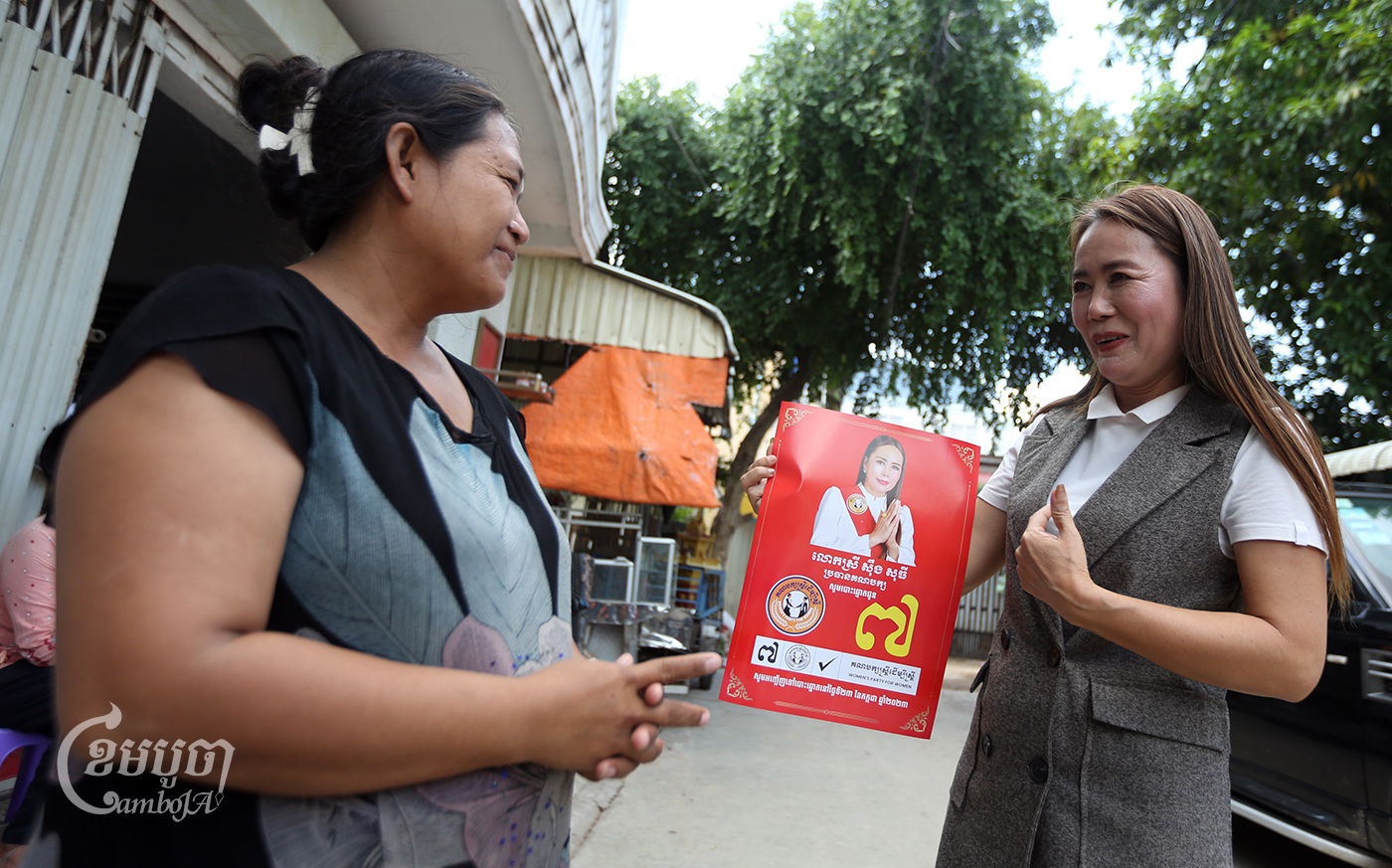
Mao Mab, executive director of Klahaan, a women’s rights organization, said the number of women involved in politics, public affairs and decision-making positions is small compared to men. While the number of women in the public sector is significant, they do not hold leadership positions.
“We still see a low number of women in this sector,” she said. “In the current mandate, the number of women in the National Assembly [NA] has dropped, and the number of women leaders and women in the position of minister has also decreased.”
While women make up a larger portion of the population, their representation at decision-making levels is low, which is concerning as women issues will not be addressed, she said.
“We propose that the government develop a gender equality policy as a national policy to ensure that a strategic framework mechanism is in place to ensure genuine gender equality,” she said. “Not just tell the institution to know, but it is about the specific policy to meet the needs, meet the actual needs, and it also ensures sustainable development, complete stability for all.”
Hang Samphors, team leader of Cambodian Female Journalists (CFJ), told CamboJA that the percentage of women and girls who participate in social work, politics and media is dropping, especially in decision-making roles.
“In fact, in the present government, we don’t see women holding a deputy prime minister role or becoming social workers,” said Samphors.
In journalism, Samphors found that only around 10% of women work in this field and less of them played the role of decision makers.
She believes that the presence of women in politics and the media is important in society, which is why she thinks that if the government sets a quota for women to be involved in various sectors, problem solving will be more effective.
“I request for there to be a quota, for example in the senate, what’s the percentage of women who join as leaders or in the NA, how many take on the role as decision makers. So, when women work in that field they will know what are the needs of women,” said Samphors.
If there are fewer women as decision makers, information and needs of women in society will not be addressed. “Women’s voices will not be heard, therefore their concerns will not be solved,” Samphors said.
Phoun Keoreaksmey, an environmental activist, opined that not enough is being done to promote women’s rights in schools and communities on women’s rights and the celebration of Women’s Day.
The gap between women and men is still wide, particularly in the government.
“Women can be leaders, they are knowledgeable enough to become leaders. I hope to see more women leaders in the government,” said Reaksmey.
Reasmey added that women must be recruited and motivated, regardless of ethnicity. In rural areas, there is no equality. Women are not able to plan for their future, and are unable to complete their studies.
Path forward
Klahaan’s Mao Mab believed that there are mechanisms to protect and help women and girls to participate in various fields, but there are some obstacles that impede the full implementation.
“Obviously, when one works as a journalist, she advocates for policy change and social protection, but continues to be subjected to harassment and threats,” she said.
The government should have policies or reform the quota for women candidates in the election law to be raised to 50%. At the same time, the government and other stakeholders should make gender equality policies part of the national policy framework to ensure equality.
While women representation of 40% in the civil service is remarkable, those in ministerial and institutional decision-making levels are small, she said.
“Once there is a gender equality policy, there will be full consideration by all stakeholders,” she said. Everyone should invest in the empowerment of women and girls so that they can fully participate in politics and public affairs. “If we have good policies but no investment in capacity building, they will definitely not be able to join the government in developing national stability.”
Meanwhile, Sor Sineth, spokesperson of the Ministry of Women’s Affairs, shared a different viewpoint to the NGOs. She told CamboJA that the percentage of women and girls participating in politics, civic space and other public sectors are “much better” compared to previous years.
The ministry’s women’s day theme this year is “Women and girls in digital transformation” in response to digital transformation under the government’s new strategic framework.
The ministry sees that women’s potential cannot be lost and that their contribution to nation development as well as their family goes hand in hand.
“The important thing is that we participate in the digital transformation, what she needs to learn, and schools need to be oriented to girls. Second, we need to spread the word, and third, we need to tell the community about the values of women and children. Women need to participate in all technologies,” she said.
In 2023, Khuon Sodary, president of the National Assembly of Cambodia, said both the legislature and the executive have a strong political will to encourage, promote and strengthen the role of women in achieving the 2030-2050 sustainable development goals and vision.
In the seventh legislature of the NA, women in top leadership positions (senate members) increased from 14.75% to 16.13%, but the number of female members of the national assembly decreased from 20.8 % to 13.6%. The proportion of women in the executive branch does not seem to have changed much, at about 15%. While the number of women at the sub-national level is remarkably positive.
In fact, the participation of women at the commune level and commune councilors increased from 130 (approximately 8%) to 176 (approximately 11%) in the fifth mandate from 2022-2027, the same report showed.
Sok Eysan, ruling party spokesperson, said the CPP’s policy is aimed at promoting women to ensure gender equality, which is why the CPP nominates women in all government institutions across the country. If women do not hold the position of provincial governor, they will hold the position of deputy provincial or district governor.
“We do this in order to promote the role of women, especially to push women deeper into politics,” Eysan said.
The government policy already exists, and its success depends on the individual woman herself having the ability and knowledge in accordance with the needs to be able to hold a leadership role.
“If you do not strive to build awareness and knowledge, it is not in line with the needs of national institutions. It’s because it requires high knowledge and is in line with modern technology. We have a policy to push them, but if they do not make a personal effort, it will not be possible.”
Eysan added that the reason why the number of women with less decision-making roles in the government is low is because the gap between the capacity of women and men seems to be “far apart”. He added that building human resources is “not like planting coconut trees”.
“We cannot compare the understanding and knowledge of men to women because women’s ability is not yet qualified to be appointed and promoted, and the rate of women in high positions in institutions is a bit low,” he said.
Pen Bona, government spokesperson, did not respond to CamboJA’s questions sent via Telegram.



